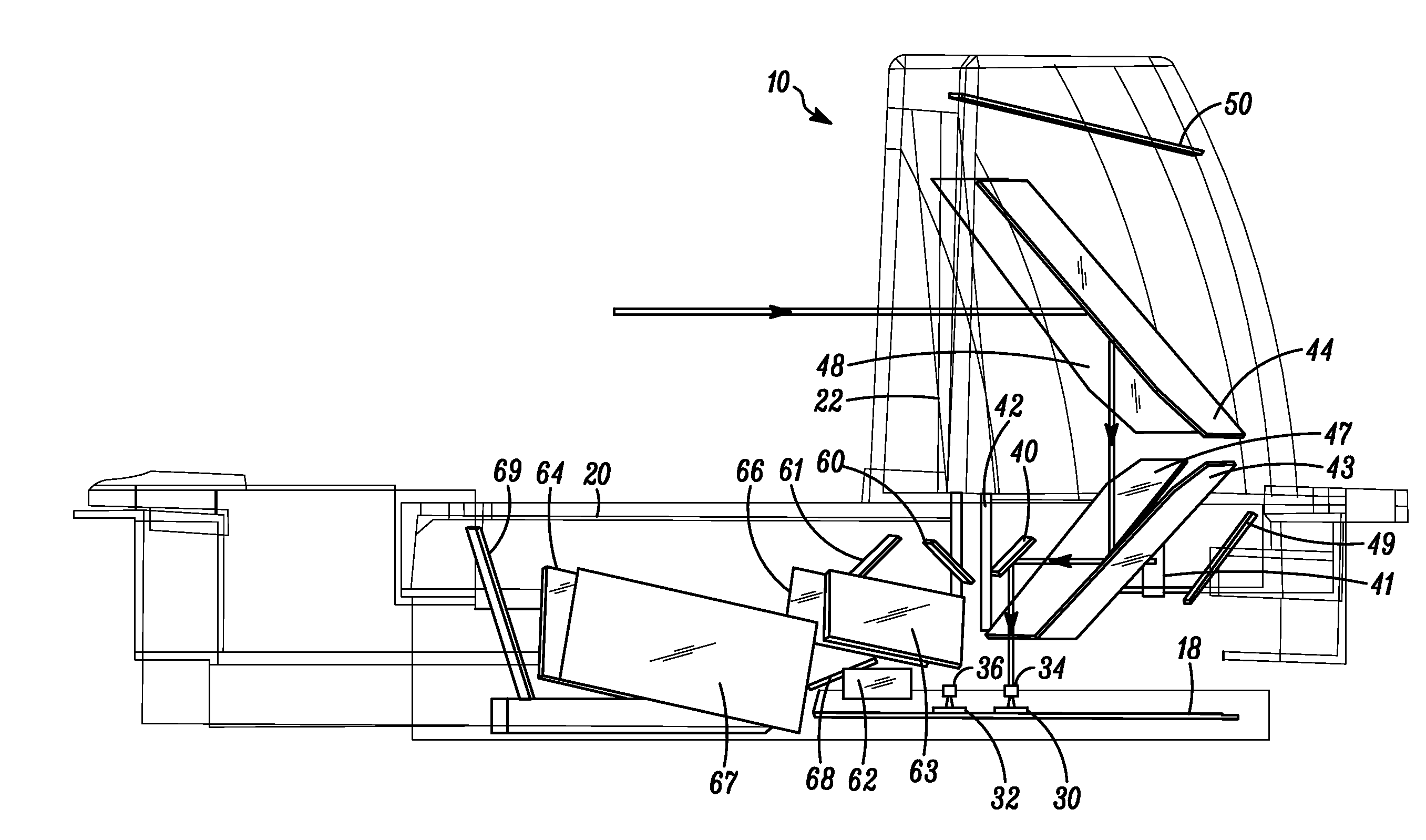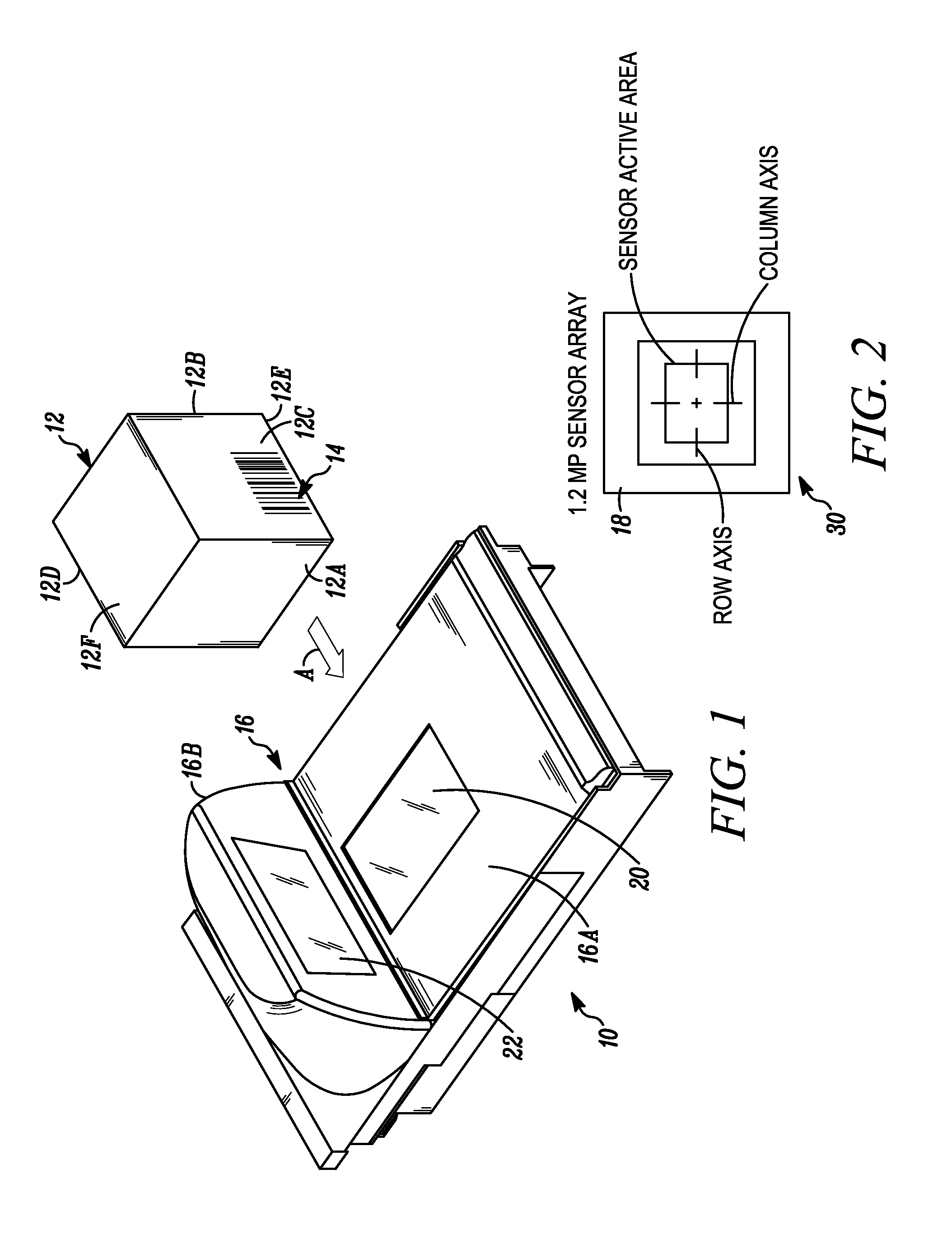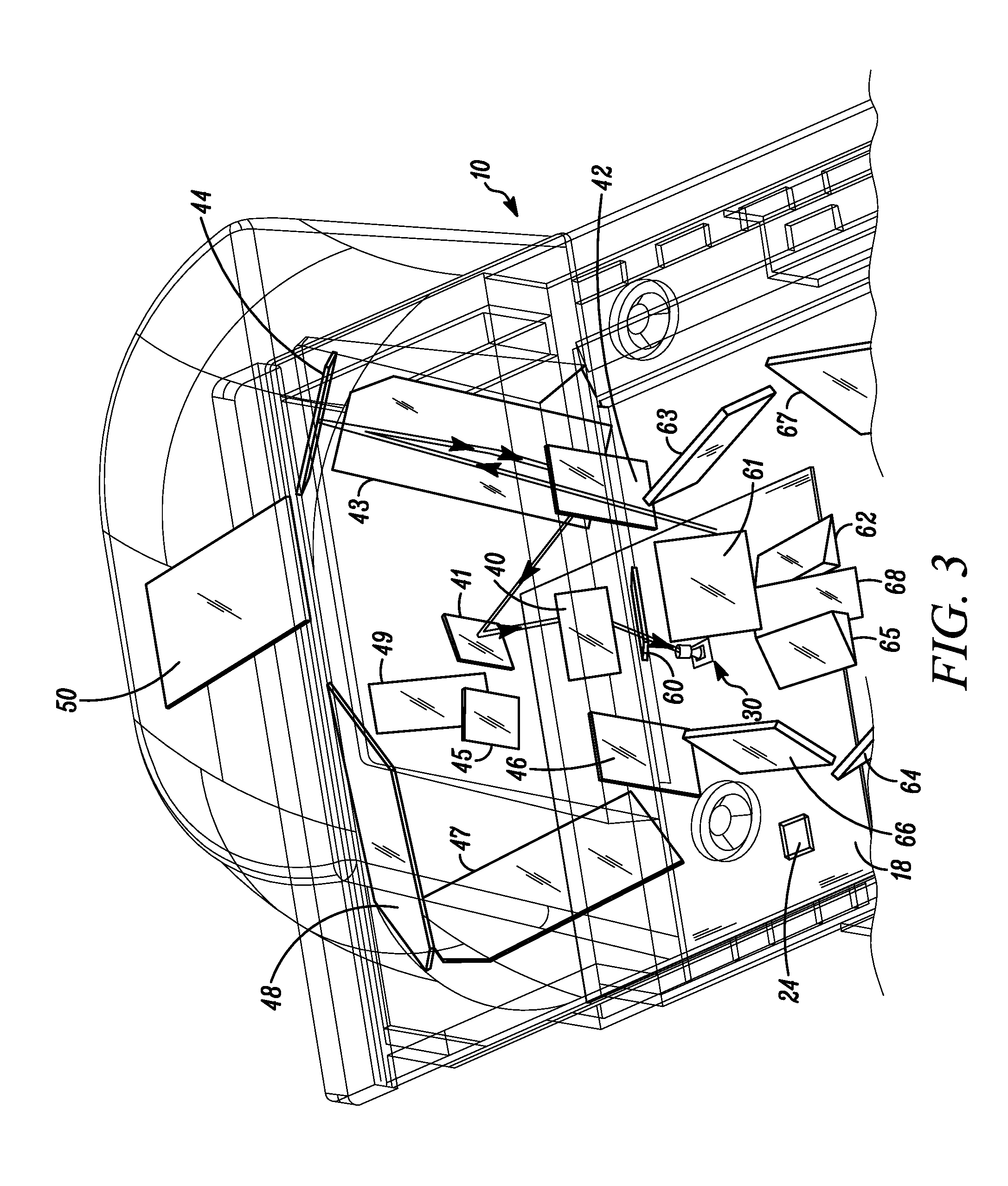Imager exposure, illumination and saturation controls in a point-of-transaction workstation
a technology of illumination and saturation control and workstation, applied in the direction of exposure control, instruments, sensing by electromagnetic radiation, etc., can solve the problems of sluggish workstation performance, perceived defects, and variable symbol location in advance, so as to improve processing performance, shorten illumination time, and add complexity and undue expense to the workstation
- Summary
- Abstract
- Description
- Claims
- Application Information
AI Technical Summary
Benefits of technology
Problems solved by technology
Method used
Image
Examples
Embodiment Construction
[0033]FIG. 1 depicts a dual window, bi-optical, point-of-transaction workstation 10 for electro-optically imaging indicia 14 or targets, such as the illustrated UPC symbol described above, associated with multi-sided, three-dimensional products 12, and is typically used by retailers to process transactions involving the purchase of the products 12 bearing, or printed with, the identifying indicia 14. The workstation 10 includes a housing 16 having a generally horizontal window 20 located in a generally horizontal plane and supported by a horizontal housing portion 16A, and an upright window 22 located in a generally upright plane that intersects the generally horizontal plane and supported by a raised housing portion 16B. The upright plane may lie in a vertical plane, or be slightly rearwardly or forwardly inclined relative to the vertical plane. The upright window 22 is preferably recessed within its housing portion 16B to resist scratching. By way of numerical example, the general...
PUM
 Login to View More
Login to View More Abstract
Description
Claims
Application Information
 Login to View More
Login to View More - R&D
- Intellectual Property
- Life Sciences
- Materials
- Tech Scout
- Unparalleled Data Quality
- Higher Quality Content
- 60% Fewer Hallucinations
Browse by: Latest US Patents, China's latest patents, Technical Efficacy Thesaurus, Application Domain, Technology Topic, Popular Technical Reports.
© 2025 PatSnap. All rights reserved.Legal|Privacy policy|Modern Slavery Act Transparency Statement|Sitemap|About US| Contact US: help@patsnap.com



